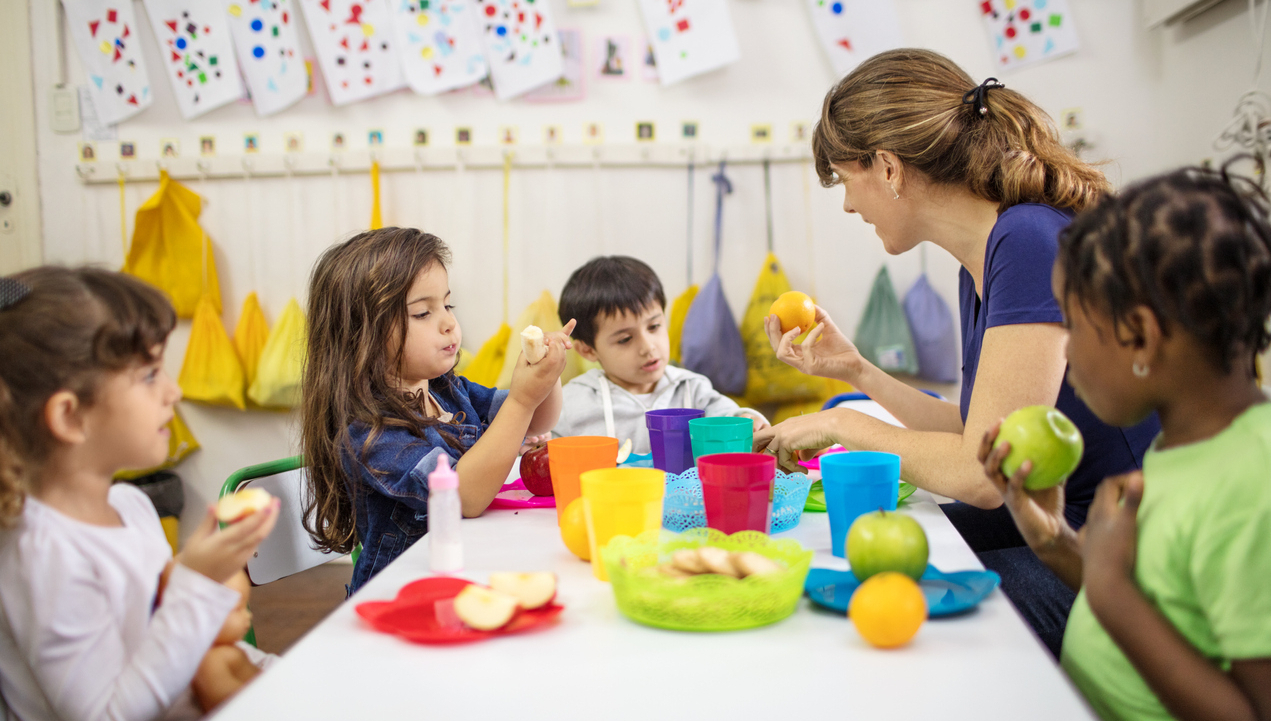Building Preschooler Independence with Food Choices
- Written by: Lynne Lafave

Preschoolers are in a period of rapid development, becoming strong, resourceful, capable individuals!1 Preschoolers have a strong desire for independence. They are emerging with distinct personalities ready to take on the world before them!
“Learning requires that children have time, space, and encouragement to practice personal care skills”.1
Children need to be involved in the choices that affect them and caregivers can build child competence by providing choices for preschoolers to practice this independence in a caring and nurturing environment. Research suggests that providing children with meaningful choices supports a child’s independence, self-determination, and decision-making abilities.2 Educators can assist this learning by considering ways to offer food choices that provide positive meal and snack times as well as enrich children’s social connections, learning, and health.3
Ways to offer food choices to your preschoolers.
Help children learn by preparing food themselves.
Give children the power of choice by letting them participate in preparing food.3 Including children in food preparation helps them to learn about the process and labor involved in food preparation. It increases their connection to the journey of food from the grocery store to the food on the plate. Children eat more of the food they prepared themselves4, so this also provides a way to transition vegetable-and-fruit avoiders to vegetable-and-fruit choosers.
Help children learn by deciding what to eat from the food offered.
Give children the power of choice by deciding what to eat from the food that is offered.3 By offering a variety of healthy food and drinks, you can feel confident that your preschoolers will have access to good nutrition. You can also feel confident that you are helping to develop independence as the children are making decisions on what to eat. A good way to provide young children with choices is to start with two or three approved options. This way the options are healthy, but the child is able to decide what they want to eat without overwhelming them with choices. Balance here is the key.
Help children learn by serving themselves.
Give children the power of choice through serving size.3 Teaching children to start with small amounts of food, and to take more if they are still hungry allows them to respect their own internal sense of hunger. Learning to trust themselves with food builds a strong internal control that helps build a healthy adult.
Help children learn by trusting them when they say they are full.
Going hand in hand with serving themselves, is trusting children to choose when they are full.3 We all want children to get enough food, but pressuring children to eat more interferes with learning to trust their own feelings of fullness. Trusting children when they say they are full aligns with our vision of the child as strong, resourceful, capable individuals that can decide for themselves about how much to eat.
Children seek independence as they grow older.
It is important to provide children with the knowledge and tools to allow them to make good choices for themselves. During the early years, children require structure and routine to ensure healthy development; integrating small choices will promote their independence and teach healthy habits that will stick with them for a lifetime!
References
-
Makovichuk, L., Hewes, J., Lirette, P., & Thomas, N. (2014). Flight: Alberta’s early learning and care framework. Retrieved from flightframework.ca.
-
Jolivette, K., McCormick, K., McLaren, E., & Steed, E.A. (2009). Opportunities for Young Children to Make Choices in a Model Interdisciplinary and Inclusive Preschool Program. Infants & Young Children, 25(4), 396-414.
-
Alberta Health Services. (2020). Support Positive Mealtimes. Alberta Health Services. https://www.albertahealthservices.ca/nutrition/Page17264.aspx
-
DeJesus, J. M., Gelman, S. A., Herold, I., & Lumeng, J. C. (2019). Children eat more food when they prepare it themselves. Appetite, 133, 305-312.